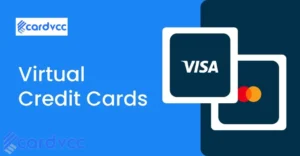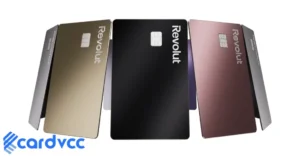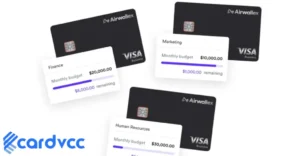A virtual card is a digital-only card used for online transactions. A debit card is a physical card used for in-person and online purchases.

Virtual cards are growing in popularity due to their security features. They offer a temporary card number, which reduces the risk of fraud. Users can generate these cards for specific transactions or time periods. This makes them ideal for online shopping and subscriptions.
On the other hand, debit cards are linked directly to a bank account. They allow users to withdraw cash from ATMs and make in-person payments. Debit cards are widely accepted and convenient for everyday use. Understanding the differences helps users choose the right card for their needs.
Virtual Card Basics
Understanding the basics of virtual cards can help you use them effectively. Virtual cards provide a secure and convenient way to manage online transactions. Let’s explore what a virtual card is and how it works.
Definition
A virtual card is a digital version of a physical card. It is used mainly for online purchases. Unlike a traditional card, it does not have a physical form. It is issued by your bank or payment service provider.
How It Works
A virtual card works like a regular debit or credit card. Here is how it functions:
- You receive a unique card number, expiration date, and CVV code.
- You enter these details at checkout to make online purchases.
- The card is linked to your main account for transactions.
- Some virtual cards can be used only once for added security.
Virtual cards are designed to protect your main account information. They add a layer of security by using temporary or unique card details. This makes them ideal for online shopping and subscriptions.
Debit Card Basics
Understanding the basics of a debit card helps in making smart financial decisions. It is important to know how these cards work and their benefits.
Definition
A debit card is a payment card linked directly to your bank account. It allows you to spend money by drawing on funds you have in the bank.
How It Works
When you use a debit card, the money comes directly from your bank account. This means you can only spend what you have.
- Purchases: Swipe or insert the card at a store to pay.
- Online shopping: Enter card details to buy items online.
- ATM withdrawals: Use the card to withdraw cash from ATMs.
| Feature | Description |
|---|---|
| Security | Protected by a PIN and sometimes extra verification steps. |
| Spending limit | Limited to the balance in your bank account. |
| Transaction speed | Instant transfer of funds from your bank. |
Security Features
When discussing payment methods, understanding the security features of both virtual cards and debit cards is crucial. These security measures ensure your transactions remain safe and your personal information is protected.
Virtual Card Security
Virtual cards offer unique security advantages. They generate a temporary card number for each transaction. This limits the risk of fraud. If the number gets stolen, it cannot be reused.
Additional features include:
- Single-use card numbers
- Expiry dates set by the user
- Customizable spending limits
Virtual cards also mask your real card information. This adds an extra layer of security. Fraudsters find it harder to access your actual account.
Debit Card Security
Debit cards come with security features as well. They often include chip technology. This makes it harder to clone the card.
Other common security measures are:
- PIN protection
- Fraud monitoring
- Real-time alerts for transactions
Though debit cards are secure, they can be more vulnerable. If stolen, the thief could access your entire bank account.
Here’s a comparison table for a quick overview:
| Feature | Virtual Card | Debit Card |
|---|---|---|
| Temporary Card Number | Yes | No |
| Custom Spending Limits | Yes | No |
| PIN Protection | No | Yes |
| Fraud Monitoring | Yes | Yes |
Both virtual and debit cards offer distinct security features. Choosing the right one depends on your needs.
Usage Scenarios
Understanding the difference between a virtual card and a debit card can help you choose the best payment method for various situations. Each card type has unique usage scenarios that make them better suited for different kinds of transactions.
Online Shopping
Virtual cards are perfect for online shopping. They offer a high level of security. You can generate a new card number for every purchase. This makes it harder for hackers to steal your information. Virtual cards also help in managing your budget. You can set spending limits and expiration dates. This ensures you never overspend or get charged unexpectedly.
Debit cards are also commonly used for online shopping. They are linked directly to your bank account. This means any purchase amount is deducted instantly. Debit cards are widely accepted by most online retailers. However, they do not offer the same level of security as virtual cards. If your debit card details are stolen, it can lead to direct access to your bank funds.
In-store Purchases
Using virtual cards for in-store purchases is less common. They are not designed for physical transactions. Some digital wallets allow you to use virtual cards in stores. But this requires specific apps and NFC technology. This limits the ease and convenience of using virtual cards for everyday purchases.
Debit cards excel in in-store purchases. They can be swiped, tapped, or inserted into card readers. They offer real-time transaction processing. This makes them ideal for quick, seamless transactions. Most retail stores accept debit cards. This ensures you can use them almost anywhere, from grocery stores to restaurants.
| Usage Scenario | Virtual Card | Debit Card |
|---|---|---|
| Online Shopping | High security, budget control | Instant deduction, widely accepted |
| In-Store Purchases | Less common, and requires specific apps | Widely accepted, real-time processing |

Cost And Fees
Understanding the cost and fees is essential when comparing a virtual card and a debit card. Each type of card has its fee structure, which can impact your budget and spending habits. Let’s break down the differences in costs and fees for both virtual cards and debit cards.
Virtual Card Fees
Virtual cards often come with various fees, which can include:
- Monthly Maintenance Fee: Some virtual cards charge a monthly fee.
- Transaction Fees: There may be fees for each transaction.
- Foreign Transaction Fees: Charges for using the card abroad.
- Replacement Fees: Costs for replacing a lost virtual card.
These fees can add up, so it’s important to read the fine print.
Debit Card Fees
Debit cards also come with their own set of fees, such as:
- ATM Fees: Charges for withdrawing cash from non-network ATMs.
- Maintenance Fees: Monthly fees for maintaining the account.
- Overdraft Fees: Charges for spending more than the account balance.
- Foreign Transaction Fees: Fees for international transactions.
These fees can vary based on the bank and type of account.
Here is a comparison table for a clearer view:
| Fee Type | Virtual Card | Debit Card |
|---|---|---|
| Monthly Maintenance Fee | Yes | Yes |
| Transaction Fees | Yes | No |
| Foreign Transaction Fees | Yes | Yes |
| ATM Fees | No | Yes |
| Overdraft Fees | No | Yes |
By understanding these fees, you can make a more informed decision. Choose the card that best fits your needs and budget.
Advantages
The advantages of using a virtual card versus a debit card can greatly impact your financial habits. Each card type offers unique benefits that suit different needs and preferences. Understanding these benefits can help you make more informed choices about your financial tools.
Virtual Card Benefits
- Enhanced Security: Virtual cards are not tied to your physical card. This reduces the risk of fraud.
- Temporary Numbers: Virtual cards often use temporary numbers. These numbers expire after use, adding an extra layer of security.
- Easy Cancellation: Cancel a virtual card without affecting your main account. This is useful for managing subscriptions.
- Online Shopping: Virtual cards are perfect for online purchases. They protect your actual card details from being compromised.
Debit Card Benefits
- Wide Acceptance: Debit cards are accepted almost everywhere. They are convenient for in-person and online shopping.
- ATM Access: Debit cards allow you to withdraw cash from ATMs. This makes accessing cash quick and easy.
- Direct Account Link: Debit cards are linked directly to your bank account. This offers easy tracking of your spending.
- Rewards Programs: Some debit cards offer rewards or cashback. This can help you save money on purchases.
Both virtual and debit cards offer distinct advantages. Your choice depends on your personal financial needs and habits.
Disadvantages
Understanding the disadvantages of both virtual cards and debit cards is important. Each has its own set of limitations that users should be aware of. These drawbacks can affect your financial decisions and security.
Virtual Card Drawbacks
Virtual cards offer many benefits, but they also have some drawbacks:
- Limited Acceptance: Some merchants do not accept virtual cards.
- No Physical Presence: You cannot use a virtual card at ATMs.
- Expiration Dates: Virtual cards often have short expiration dates.
- Limited Features: They may lack the features of physical cards.
Debit Card Drawbacks
Debit cards are widely used, but they also have their limitations:
- Higher Fraud Risk: Debit cards are more prone to fraud.
- Overdraft Fees: You may incur fees if you overdraw your account.
- Limited Dispute Rights: Resolving disputes can take longer.
- No Credit Building: Using a debit card does not build credit.
| Feature | Virtual Card | Debit Card |
|---|---|---|
| Acceptance | Limited | Wide |
| ATM Use | No | Yes |
| Fraud Risk | Lower | Higher |
| Expiration | Short | Long |
Choosing The Right Card
Selecting the right card can be challenging. Both virtual and debit cards have unique benefits. Understanding the differences helps in making an informed decision. Below are some key factors to consider.
Factors To Consider
- Security: Virtual cards often provide enhanced security. They use temporary numbers, reducing fraud risk.
- Usability: Debit cards are widely accepted in physical stores. Virtual cards are mainly for online purchases.
- Convenience: Debit cards are tangible. You can carry them in your wallet. Virtual cards are stored digitally, making them easy to access on your phone.
- Fees: Check for any fees associated with each card. Some virtual cards may have fees for certain transactions. Debit cards might have ATM withdrawal fees.
Personal Preferences
Personal preferences play a crucial role. Here are some points to ponder:
- Shopping Habits: Do you shop mostly online? A virtual card might be better.
- Budgeting: Do you need to track spending closely? Debit cards can help you manage your budget. They directly withdraw from your bank account.
- Tech-Savvy: Are you comfortable using digital wallets? Virtual cards integrate seamlessly with them.
- Travel: Do you travel often? Debit cards are handy for ATM withdrawals abroad.
Understanding these differences helps in choosing the right card. Both types have unique benefits. Your decision should align with your lifestyle and needs.

Frequently Asked Questions What is the difference between a virtual card and a debit card?
What Is A Virtual Card?
A virtual card is a digital card used for online payments. It offers enhanced security by generating unique card numbers.
How Does A Debit Card Work?
A debit card directly withdraws funds from your bank account. It can be used for both online and in-store purchases.
Are Virtual Cards Safer Than Debit Cards?
Yes, virtual cards are generally safer. They use unique, temporary card numbers, reducing the risk of fraud.
Can I Use A Virtual Card For In-store Purchases?
No, virtual cards are primarily designed for online transactions. They cannot be swiped or inserted at physical stores.
Conclusion
Understanding the differences between virtual cards and debit cards is crucial. Virtual cards offer online security, while debit cards are versatile for everyday use. Both have unique benefits and limitations. Choose the option that aligns with your financial needs and lifestyle.
Read More- How to Buy Virtual Credit Card







